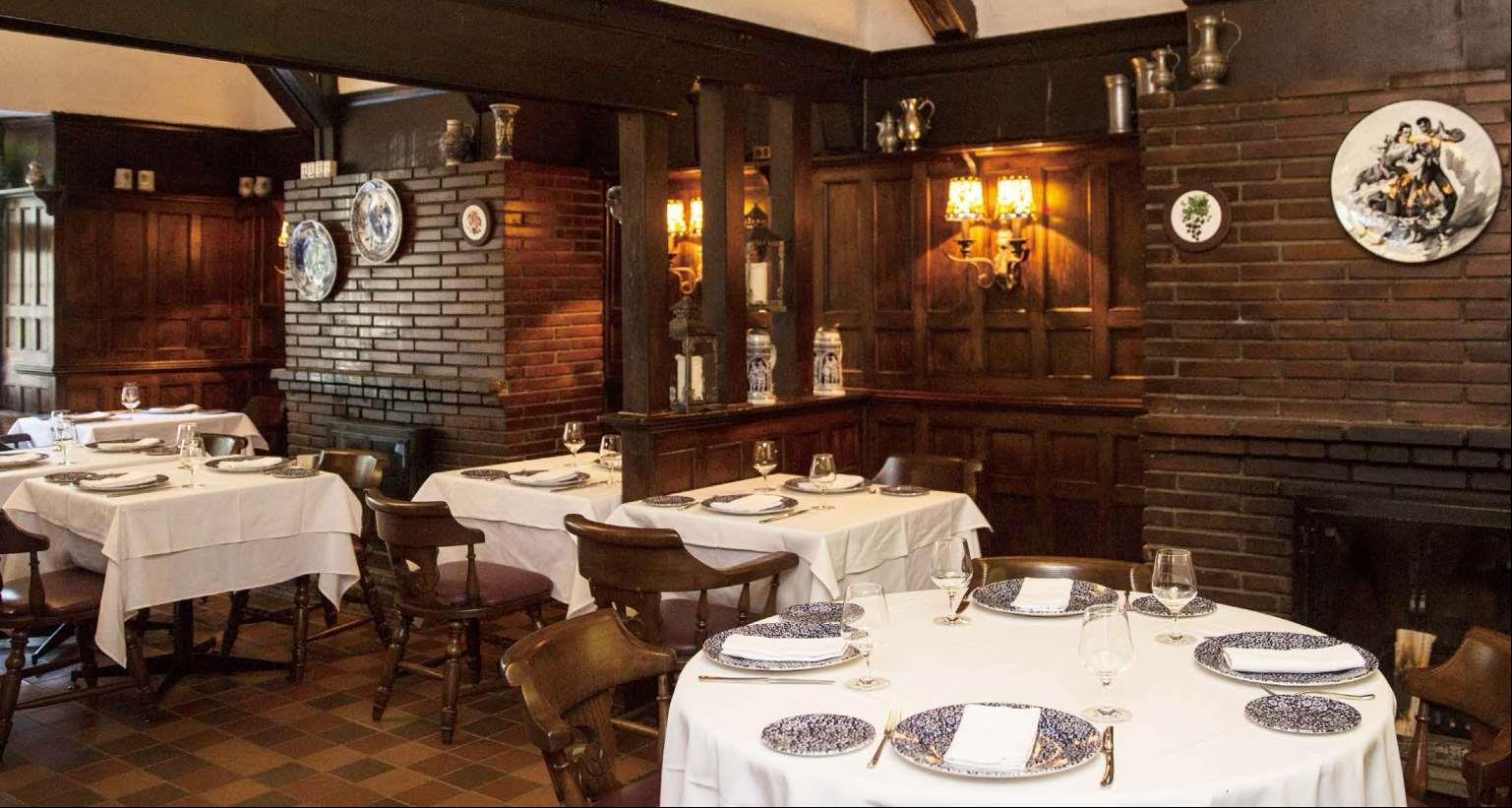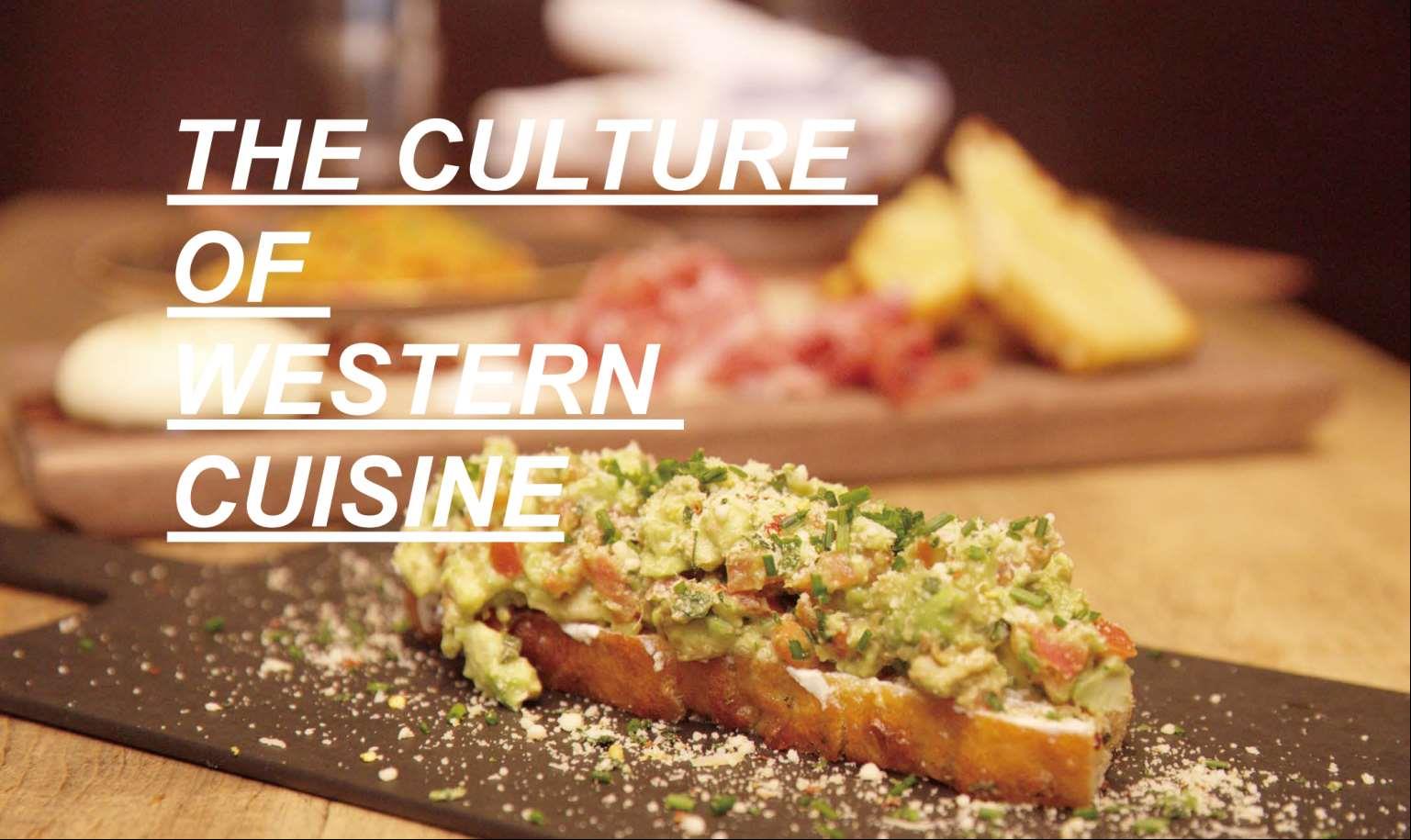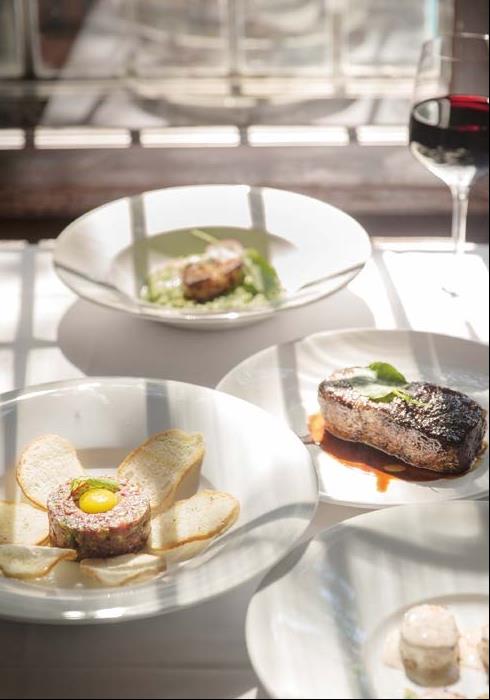






“西”是西方的意思,“餐”即饮食、菜肴。西餐在大多数情况下指欧洲美食,即以法、英、德、意、俄等国为主要代表的餐饮,当然还包括东欧各国、地中海沿岸各国和拉丁美洲一些国家(如墨西哥)的菜肴。西餐一般使用橄榄油、黄油、番茄酱、沙拉酱等为调味料,以不同的主食搭配一些新鲜蔬菜,如番茄、西蓝花等。西餐以刀、叉为餐具,以面包为主食,以长形桌为餐桌。特点是主料突出,形、色美观,口味鲜美,营养丰富,供应方便等。西餐包括餐汤、前菜、主菜、餐后甜品及饮品。西方人并没有明确的“西餐”概念,这个概念是中国人和其他东方人的。
西餐烹饪起源于古埃及,金字塔铭文中记载了当时尼罗河流域丰富的物产,包括蔬菜、水果、鱼类和禽类等,以及闻名遐迩的面包制作业和糖果业。古埃及人创造的一些食品被人们一直食用到现在,并在世界各地菜单中继续发挥着重要的作用。
西餐烹饪兴起于古希腊、古罗马时期。在欧洲,古希腊率先踏进人类文明的大门,古希腊烹饪艺术的产生和发展为以后西餐烹饪、餐饮服务的兴起和发展打下了基础。由于受到古埃及和古希腊文化的熏陶,古罗马人的烹饪方法上从欧洲最早的烹饪书中学到很多知识,烹饪技术和厨师的社会地位也得到很大的提高,意大利是古罗马的发祥地。古罗马时期的宴会和饮食极其奢侈、繁荣,成为烹饪发展鼎盛时期,可以说古老的意大利饮食是传统西餐的鼻祖。
中世纪以后西欧烹饪文化发展。公元6世纪初,日耳曼人建立了当时西欧最强大的国家——法兰克王国。公元843年,法兰克王国被国王路易的三个儿子瓜分成三个国家,即现在的法国、意大利、德国。公元8世纪,查理大帝曾命令通往朝圣地沿途的修道院和教会要设置接待朝圣者的设施,有食堂、寝室、面包房、酒店、啤酒冷藏室等,现代欧洲饭店起源于修道院之说,大概出于此。后来,罗马人的许多生活习惯、习俗礼节和烹调技艺很快传给了英国人。14世纪的手抄食谱显示了法国烹饪对英国烹饪在术语和加工方法上的巨大影响。中世纪英国食谱的另一个重点是懂得了怎样用香料和调料。16世纪英国的烹饪开始走下坡路,法国的烹饪艺术赶上了英国。法王亨利二世娶了酷爱烹调艺术的意大利豪门闺秀凯瑟琳·美第奇,她随身带去了许多著名的厨师,把意大利烹饪技艺也带到了法国,法国一流的烹饪已在整个世界闻名。法国的烹饪艺术包括完美的计划菜单、优越的自然条件、新鲜高级的原料、厨师的天才和艺术修养、完美的礼仪、精细而又营养均衡的美味佳肴,以及具有较高欣赏能力和素养的美食者。
近代欧美烹饪的发展,英国占有重要的一席。自从英国开始同印度与中国开始贸易活动,饮茶就成为英国人的一大饮食习惯。土豆首先在欧洲被普遍种植和食用,面粉、咖啡、鲜肉广泛应用。许多大师不仅从法国、英国,还从意大利、西班牙、德国、俄罗斯吸收最新烹调方法来改善本国的烹饪。西餐烹饪的外延范围不断扩大,对世界各地的影响也越来越深。自哥伦布发现美洲大陆后,西班牙、法国、荷兰、英国等国殖民者相继入侵,随着英国人的迁入,英国饮食文化在北美扎了根,现代西餐中的美国菜式是在英国烹饪的基础上发展起来的。
随着国际政治、经济、文化交流的日益发展,欧美饮食文化流传的范围更广了,更重要的是生产的机械化、自动化,烹调设备和工具不断发展变化,烹调工艺不断进步。合理膳食、平衡营养与饮食卫生是现代烹饪的重要组成部分,现代科学技术和营养科学知识的广泛运用是现代西餐烹饪发展的一个重要标志。

Western cuisine encompasses the dishes and cooking skills originating from Westerncountries like France, Britain, Germany, Italy and Russia, as well as some countries in EasternEurope, Latin America (like Mexico) and those alongside the Mediterranean Sea. Western cuisinerelies on all kinds of flavoring, for example, olive oil, butter, tomato sauce, mayonnaise and muchmore. The main dishes are usually served with vegetables like sliced tomato, broccoli or others.Compared with Chinese cuisine, there are many differences between the two cuisine cultures. Theutilization of forks and knives are required to eat Western cuisine. Bread is consumed instead ofrice. The dining table is generally rectangle instead of circle. Western cuisine prefers to put saladto accompany the main dish to for aesthetics and to supplement and balance the dish. A formaldinner includes drinks, soup, appetizer, main course, and dessert. For Westerners, it seems thereis no truly clear concept of “Western cuisine” so this analysis is based on public knowledge andmy personal findings.
The origin of Western cuisine dates back to the AncientEgypt. Pyramids hieroglyphs spoke of the bounty from the richNile River, which included vegetables, fruits, fish, and poultry.At that time, Egyptians had already developed sophisticatedskills to make bread and sugar. Their skills and recipes werepassed down and continue to play an important role in therestaurants today.
Western cuisine also rose from the ancient Greek andRomans. Europe, it was the Greeks who were the first humancivilization who appeared to develop cooking skills to lay thefoundation of Western cuisine today. Under the influence ofthe ancient Egyptian and ancient Greek cuisine, the Romanslearned from the early European culinary books and improved their cooking skills, and the statusof Roman chefs was elevated during their time period. Western cuisine was said to have reachedits luxurious prime during the Roman Empire. Romans may be considered the “Father of WesternCuisine”.

The culture of Western Europe developed after the medieval period. In the beginning ofthe 6th century, Germanic built the strongest country – Frankish Kingdom in Western Europe atthat time. In 843AD, the kingdom was divided into three countries by King Louis III’s three sons– they were France, Italy and Germany. In the 8th century, Charlemagne once demanded themonastery and church to supply for the pilgrims on their way to the holy place, they built canteen,bedroom, baking room, hotel and beer cellar – it is said that modern European hotels date backto those monasteries. Later, ancient Roman habits, customs and cooking skills were passed tothe British. Some handwritten recipes of the 14th century show that British cuisine also learneda lot from French cuisine, for example, methods to use spices and sauces in cooking. The 16thcentury witnessed a decline in British cuisine as it was surpassed by French cuisine. It wasall because Henry II, the King of France married Catherine de’ Medici, a member of the rulingfamily of Florence, who adored the art of cuisine and brought with her many famous chefs andItalian cooking skills. French cuisine soon became popular in the world. The art of French cuisinecontained a detailed menu, tribute to the natural environment, luxurious ingredients, talented chefsand aesthetics. A very traditional, delicate and balanced diet was the core of French cuisine.
The development of Western cuisine in Britain is also important. The British drank teaevery day since they began to trade with India and China. Potatoes were first grown and eatenin Europe. Powder, coffee and various fresh cuts of meat were also widely used. Many aspiringchefs attempt to learn French and British cuisine, but also combine Italian, Spanish, Germanand Russian cuisine to create new dishes and build their repertoire. The influence of Westerncuisine gained a wider scope in the world. When Columbus discovered the Americas, Spanish,French, Dutch and British, colonists brought their food culture influences and expanded it into theAmericas. This was the beginning of distinctive American and Latin American cuisine.
As politics, economies and culture developed and changed rapidly, so did Western cuisine.More importantly, as the procedure of production became more automated, cooking equipmentalso evolved. Healthy diet, balanced nutrition and qualified hygiene are the most importantelements of contemporary culinary industry. Modern scientific techniques and the application ofnutritional knowledge are the essential signs of contemporary Western cuisine.